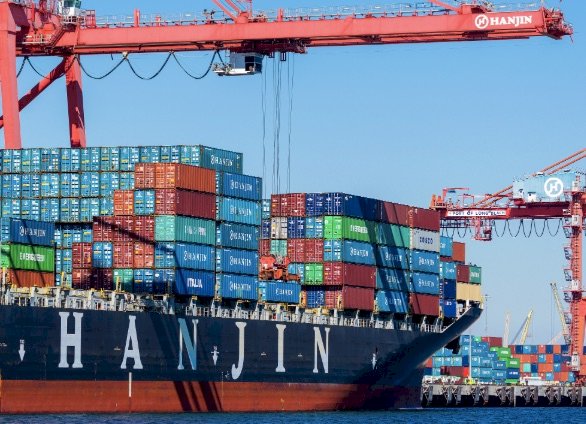Tightening ocean freight felt by Grain markets
- By: "Farm Tender" News
- Cropping & Grain News
- Mar 24, 2021
- 606 views
- Share

By Samuel Reichstein - AWB
Local conditions are all the talk as weather events around the country begin to shape the coming season. But while these local conditions are all important, agriculture is a global industry and affected by a range of global factors. Some of these factors are exerting their influence on the local market right now.
One of the first major influences is the current state of the world economy. As central banks around the world continue to stimulate economies and the cost of money remains cheap, demand for assets such as equities, property and commodities continue to grow. Commodities such as iron ore, coal and copper as well as grain and oilseed markets are riding on this bull market wave, and as such, global trade flows are booming. Demand for ocean freight to move these commodities is also increasing and as such the cost of freight is rising. As an indicator, the Baltic Dry Bulk Index, which tracks global dry bulk freight prices, has recently hit an 18 month high. Specifically, the Baltic Panamax Index, which tracks dry bulk vessels with capacity of approximately 60,000mt, has shot up 100% since January, hitting highs not seen since 2011.
What does this mean for grain and oilseed prices in Australia? The tightness in the global freight market is certainly being felt in supply chains across Australia. Naturally, as the cost of vessels rise, freight rates to move the product also rise and as a result the cost of moving grain and oilseeds from Australia to consumers globally also increases. In addition to this, as the supply of suitable vessels falls it becomes more difficult for exporters to find vessels to meet contractual shipment periods.
As the cost of vessels rise, the risk to the exporter increases. With limited vessels available and a big export program out of Australia, congestion occurs at Australian ports which can mean delays in getting a vessel into berth to be loaded. The implication on delays at port is the cost of demurrage. The cost of a vessel (referred to as the daily hire rate) has risen to approximately USD 25,000 per day, and as a result not loading a vessel on time costs the vessel charterer (hirer) USD 25,000 per day while it waits to be loaded. This added risk and cost of exporting in an efficient market normally leads to a reduction in the price of grain and oilseeds in Australia, reflecting the increased risk.
On the flip side of higher freight rates negatively impacting grain and oilseed prices, Australia is naturally freight-advantaged in Asia compared to other major exporters. As freight rates increase globally, the freight advantage Australia has will continue to increase and offset some of the impact on grain and oilseed prices.
How these conditions continue to play out will be of interest to all growers as they finalise their program from last season and begin to plan for the season ahead.









Share Ag News Via